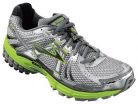(Press-News.org) Known for her poetry, letters, love affair and marriage to Robert Browning, Elizabeth Barrett Browning also left a legacy of unanswered questions about her lifelong chronic illness. Now, a Penn State anthropologist, with the aid of her daughter, may have unraveled the mystery.
Born in 1806, Barrett Browning suffered throughout her life from incapacitating weakness, heart palpitations, intense response to heat and cold, intense response to illnesses as mild as a cold, and general exhaustion in bouts that lasted from days to months or years. Her doctors were unable to diagnose or treat her illness, which apparently first appeared around age 13.
"Conjectures by modern biographers about Barrett Browning's condition include anorexia nervosa, neurasthenia; tuberculosis; pertussis, an encephalomyelitis; non-paralytic poliomyelitis; paralytic scoliosis, or the lifetime effects of injuries to her spine from falling from her horse in early adolescence; opium addiction; and mental illness, including anxiety and agoraphobia," Anne Buchanan, research associate in anthropology, reports in the current issue of Perspectives in Biology and Medicine.
Some even attribute her illness to defense against the inferior status and treatment of Victorian women, or simply to malingering.
Ellen Buchanan Weiss, Buchanan's daughter, noted the symptoms recorded in Barrett Browning's letters because the symptoms seemed so similar to those that she experienced. Buchanan Weiss has hypokalemic periodic paralysis (HKPP), a muscle disorder that causes blood levels of potassium to fall because potassium becomes trapped in muscle cells. The disorder was first described in 1874 in German and then in 1901 in English. Barrett Browning died in 1861, long before physicians would have any idea of HKPP.
Today, oral or intravenous potassium can prevent or stop an attack, but there is no cure for the disorder, which may be genetic, either inherited or caused by a sporadic mutation. According to Buchanan, there is slight evidence of an uncle in Barrett Browning's family who may have suffered the same symptoms. While Elizabeth and Robert did have a son, he apparently had no offspring so there are no living descendants.
A variety of triggers can initiate weakness for people with a periodic paralysis, says Buchanan. Common triggers for people with HKPP include anything that increases secretion of insulin -- alcohol, hunger or high carbohydrate foods -- table salt, excessive heat or cold, sudden temperature change, illness, sleep, exercise or some medications. Symptoms of HKPP generally first appear at puberty.
Barrett Browning's first bout occurred after a minor illness, which was followed by measles. Her health continued to decline, and although physicians were unable to diagnose her malady, one prescribed opium to which she became addicted for life. This illness lasted for more than a year and at times she was so weak she could not sit upright without support.
Barrett Browning writes in the diary that she kept during her 25th year of other triggers for her ailment. She notes becoming weak after eating a generous portion of honey, a substance that would increase insulin production. She reports an episode that followed an outing where she ran down a hill, was rained upon and thoroughly soaked.
Throughout her life, she suffered terribly during the cold damp winters in England, especially in London, and only found some relief after marrying Robert Browning and escaping to the warmer, milder climate of Italy.
Other incidents in her life that she recorded include suffering terribly after a day of religious fasting. Hunger is a strong HKPP trigger. Her letters to Browning, her 25th year diary and other letters to friends and relatives describe not only the symptoms of her disease, which mirror those of HKPP suffers and Buchanan Weiss specifically, but also a list of triggers that are now known to be specific triggers for HKPP.
After two years of declining health, Barrett Browning died on June 29, 1861, in Browning's arms.
Buchanan notes that "many others have read these same descriptions, looking for clues to her illness, but my daughter's experience with HKPP has given us a perhaps unique lens through which to view them."
INFORMATION:
Elizabeth Barrett Browning's illness deciphered after 150 years
2011-12-19
ELSE PRESS RELEASES FROM THIS DATE:
RunningShoes.com Launches Brooks Shoe Giveaway
2011-12-19
RunningShoes.com is hosting a giveaway to get runners geared up for the upcoming new year. The online retailer has teamed up with Brooks to give away the latest style of its Adrenaline GTS running shoes.
Launching in January 2012, the Brooks Adrenaline GTS 12 is the twelfth iteration of its No. 1 selling shoe. Through the years, this stability shoe has received numerous accolades for its smooth ride. Most recently Runner's World deemed the 11th version of the Adrenaline GTS the "Best Update" in its winter shoe guide. For those not familiar with Brooks running ...
Tissue structure delays cancer development
2011-12-19
This press release is available in German.
Cancer growth normally follows a lengthy period of development. Over the course of time, genetic mutations often accumulate in cells, leading first to pre-cancerous conditions and ultimately to tumour growth. Using a mathematical model, scientists at the Max Planck Institute for Dynamics and Self-Organization in Göttingen, University of Pennsylvania and University of California San Francisco, have now shown that spatial tissue structure, such as that found in the colon, slows down the accumulation of genetic mutations, thereby ...
Algal protein gives boost to electrochemical water splitting
2011-12-19
Photosynthesis is considered the 'Holy Grail' in the field of sustainable energy generation because it directly converts solar energy into storable fuel using nothing but water and carbon dioxide (CO2). Scientists have long tried to mimic the underlying natural processes and to optimize them for energy device applications such as photo-electrochemical cells (PEC), which use sunlight to electrochemically split water – and thus directly generate hydrogen, cutting short the more conventional approach using photovoltaic cells for the electrolysis of water.
Traditionally, PEC ...
Study reveals gender bias of prospective parents
2011-12-19
A Queen's University study has found that when people think about having children, men want boys and women want girls.
"Gender neutrality - a lack of preference - is now a standard cultural norm embraced within most wealthy developed countries like Canada," says Lonnie Aarssen, a Queen's biology professor and co-author of the study. His results, though, reveal a strong gender bias, despite the researchers' prediction that they would find evidence of a well-established contemporary culture of gender neutrality.
As a way of explaining these findings, Dr. Aarssen says the ...
New insight into why locusts swarm
2011-12-19
New research has found that a protein associated with learning and memory plays an integral role in changing the behaviour of locusts from that of harmless grasshoppers into swarming pests.
Desert Locusts are a species of grasshopper that have evolved a Jekyll-and-Hyde disposition to survive in their harsh environment. In their solitary phase, they avoid other locusts and occur in very low density. When the sporadic rains arrive and food is more plentiful, their numbers increase.
However, as the rains cease the locusts are driven onto dwindling patches of vegetation. ...
Healthcare Talent Crisis Driving Boost in Human Capital Management
2011-12-19
Healthcare providers' ability to deliver care is more contingent upon people than any other variable, according to the KLAS report, "Human Capital Management: Finding the Right Vendor Mix." KLAS found that many providers are feeling tremendous pressure to replace, acquire, or interface human capital management (HCM) solutions to improve the recruitment, training, utilization, and retention of staff.
While most providers already have an HR/Payroll application--the foundation of an HCM system--as well as Time & Attendance (TA) and Staff Scheduling systems ...
Effect of adenotonsillectomy in children with sleep-disordered breathing
2011-12-19
Alexandria, VA -- Children may have a better quality of life (QOL) and diminished cardiovascular disease risk from the decreased endothelin 1 (ET-1) levels after adenotonsillectomy, according to new research published in the December 2011 issue of Otolaryngology – Head and Neck Surgery.
SDB is an increasingly common indication for tonsillectomy and adenoidectomy due to obstructive sleep apnea syndrome (OSAS). Cardiovascular (CV) disease frequently has been reported in patients with moderate to severe OSAS, related abnormalities include: systematic hypertension, pulmonary ...
1 trait has huge impact on whether alcohol makes you aggressive
2011-12-19
COLUMBUS, Ohio -- Drinking enough alcohol to become intoxicated increases aggression significantly in people who have one particular personality trait, according to new research.
But people without that trait don't get any more aggressive when drunk than they would when they're sober.
That trait is the ability to consider the future consequences of current actions.
"People who focus on the here and now, without thinking about the impact on the future, are more aggressive than others when they are sober, but the effect is magnified greatly when they're drunk," said ...
Fraudulent Foreclosure: Jump Legal Sues Bank of America for Foreclosure Fraud and Loan Modification Fraud in Ohio
2011-12-19
Ohio Attorneys John Sherrod and W. Mark Jump, of Jump Legal Group, have filed a class action lawsuit against Bank of America on behalf of Ohio homeowners who have been wrongfully foreclosed on by Bank of America despite never missing a single payment. The suit alleges Bank of American improperly diverted homeowners' trial loan modification payments (watch video).
The initiation of the class action lawsuit came after Bank of American foreclosed on a Canal Winchester, Ohio, couple who were shocked when a process server appeared at their door with foreclosure papers. Attorney ...
Hospitals invest heavily in new heart attack care programs but fail to improve access
2011-12-19
BOSTON – In a new study, researchers have found a 44 percent increase since 2001 in the number of hospitals that offer definitive emergency care to patients with heart attack, but only a 1 percent increase in access to that care. The study, led by Thomas W. Concannon, PhD, Assistant Professor Tufts Medical Center and Tufts University School of Medicine, will be published January 1, 2012 in Circulation: Cardiovascular Quality and Outcomes, a journal of the American Heart Association.
Patients with heart attacks caused by arterial blockages require emergency care to restore ...


